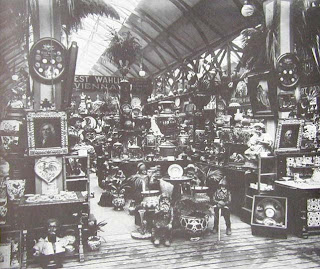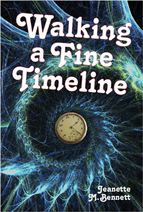 |
| tossing the old caber |
Monday, 5 November 1888 - Glasgow, Scotland
People nowadays think that while England was creating the British Empire and the Industrial Age, folks up in Scotland were running around in kilts, tossing cabers at each other. Nothing could be further from the truth! There is a reason it was called the British Empire and not the English Empire. So you can truly understand what I’m talking about, I will give a
Short History of Scotland.
The glaciers retreated after the last Ice Age, taking most of the soil from the northern part of the British Isles with them. Add to that a cold climate where even wheat won’t grow, and you have a barren place where only the toughest can survive. The Romans called these folk the Picts. The Romans tried conquering them, too, as they had the Britons but gave up. The Romans believed good fences made good neighbors so built a very big one and called it Hadrian’s Wall.
The Dark Ages came and the Romans left. No sooner had the Picts gotten rid of them than the Scots started coming over from Scotia. The Picts and Scots fought each other for supremacy, with one side then the other coming out on top, until they were so intermarried, no one was sure who was what. So Pictland became Scotland and the original home of the Scots went with the name Eire or Ireland. Scotia was just a name Romans had tacked on them and they decided they didn’t really care for it much, anyway.
Meanwhile England kicked out the Danes (Norse) just in time to be invaded by the Normans (also Norse.) The Normans slowly made their way north and took over much of the Celtic clan system and turned everyone into feudal serfs while convincing them nothing had changed. Those who were not convinced were killed because they were after all feudal lords. These Normans, like the ones that invaded Ireland, decided they would pretend to be natives with no allegiance to the English crown. Of course, the English kings weren’t really English either but also Norman, but liked to pretend they were Anglo-Saxon. Before this the Normans liked to pretend they were really French. Not sure what the other Vikings thought of this.
I probably shouldn’t pick on the Normans since Howe is in fact a Norman name, but I consider myself Anglo-Saxon except for a distant Scottish relative from the Graham Clan. (Hmm, come to think of it, Graham is also a Norman name.) I suppose it doesn’t matter. After centuries of intermarriage, the Normans became who they pretended to be anyway.
The English crown kept trying to conquer Scotland, but to no avail. Then one of those bizarre twists of history happened. Queen Elizabeth the First died without issue. Her sister Mary had married the King of Scotland, so now their son was Elizabeth’s nearest living relative, so the King of Scotland now also became the King of England. Did this mean England was now part of Scotland? Hardly. Good King James packed up and moved to London and started the Stewart line of the British crown. Scotland and England were still separate and independent nations, but they both had the same king. Unfortunately this meant anytime Scotland and England had a dispute, which happened often since they were bordering each other, the crown ruled in favor of England.
Scotland was never wealthy, but things just got worse. England locked them out of trading with any of their colonies. (Some Scots did anyway as smugglers.) Scotland decided to start it’s own colony in Panama. No one was down in Panama, right? Known as the Darien Scheme, every patriotic Scot invested in it, sending 1,000 colonists and half the money in Scotland to Panama. They found out why no one bothered with this area when most of them died of malaria. After more ships, more brave (but foolhardy) colonists and money was sent, Darien began to get a foothold. Then Spain reminded the Scots they already had claim to the land and kicked them out.
If this wasn’t enough, Scotland had suffered several years of no summer and no crops. (It was freezing in August!) England could smell blood and was poised to invade. Then someone in Parliament got an brilliant idea that wouldn’t cost any lives. Why not unite Scotland and England and call it Great Britain? The Union of Two Nations. They would even combine their two flags to create the Union Jack.
 |
| Flag of Scotland + Flag of Englnad = Union Jack |
Of course this meant Scotland would lose it’s own Parliament and independent status. At this point Scotland was so destitute and desperate that they buckled under. Could Union be any worse that what they had now? So in 1707 the Scottish Parliament voted itself out of existence and went into hiding least they get lynched. (No one could know then that the Scottish Parliament would come back in 1998.)
An odd thing then happened. Or maybe it’s not that odd, for the Scots are a tough lot. The Scots decided to reinvent themselves and become Britons. One of the last acts of the Scottish Parliament was to create a public school system. The conservative hell-fire Presbyterians wanted everyone to read the Bible, but that can’t happen unless everyone can read--and that included women. Only recently (1880s) has England begun to catch-up with the learning system Scotland has had since the early 1700s. Scotland had Britain’s first lending library. Now even the most common people were reading more than just the Bible.
Scotland had the first college professor to teach classes in the vernacular instead of Latin. Colleges were now open to all. The middle-class were now making up most of the universities student body. That wouldn’t happen until the late 1800s in England. Scotland started the first High Schools.
The Scottish Enlightenment practically invented the social sciences, economics and the modern study of history. Unlike the French Enlightenment whose philosophers entertained the nobility, the Scottish philosophers educated the masses. Is it any wonder the Encyclopedia Britannica was a Scottish invention? Meant to be the last word on everything, it was setup to grow and adapt and so has survived into the 27th century.
The more practical Scots took their new knowledge out of the classroom and into the world. Many became wealthy as merchants, using new and more efficient systems for transacting business. They bought directly from the tobacco growers of Virginia and then sold it to the rest of Europe, controlling most of the market. They did the same with other commodities brought from all over the world.
In 1763 the Scotsman, James Watt, perfected the steam engine laying the foundation for the Industrial Age. Glasgow made good use of it, becoming one of the Victorian Age’s leading manufacturers. She is called the Second Great City of the Empire.
One could argue it was the Scots that built the British Empire, not only as merchants, exporters and soldiers, but also as settlers and explorers. Scottish names pop-up continually in the history of America, Canada, Australia, New Zealand, even Singapore and India. Rivers, mountains, cities, even the Antarctic’s Ross Ice Shelf, bear the name of Scottish explorers.
 |
| Sir John MacDonald |
Canada’s first Prime Minister (Sir John MacDonald) was born in Scotland. Her first female Prime Minister (Kim Campbell) is also Scottish. New Zealand and Australia have also had Scottish Prime Ministers (not to mention the UK itself.). At least twenty-three of the American president’s are of Scottish descent--and even an Cherokee Indian Chief (John Ross)!
 |
| Francis Hutcheson |
One could argue the Scots invented America! In 1740 Francis Hutcheson argued for a right of colonial resistance to tyranny. He wasn’t the only Scottish philosopher stating that people had the right to govern themselves. A large portion of Americans at that time were Scottish and more than willing to fight the House of Hanover that had replaced the Scottish House of Stewart.
 |
| Scottish? |
Even Uncle Sam is of Scottish descent! Samuel Wilson, the son of Scottish immigrants, supplied meat to the American troops in the War of 1812. He stamped his barrels “U.S.” and the soldiers joked that U.S. stood for Uncle Sam. The joke stuck to anything marked U.S. and Uncle Sam evolved into an icon for America.
I could go on and on as to the inventors, writers, thinkers, leaders, etc. that are Scottish born or of Scottish descent. How could so many brilliant people come from this gloomy corner of the world? So forget the stereo-types of tight-fisted dour haggis eaters. Some could argue it was the Scots who invented the Victorian Age. They certainly had a strong hand in it.
List of Famous Scots
Scottish Americans
Scottish Canadians
Scottish Australians
Scottish New Zealanders
 |
1890 map of Scotland, showing the railways
(click to enlarge) |


































